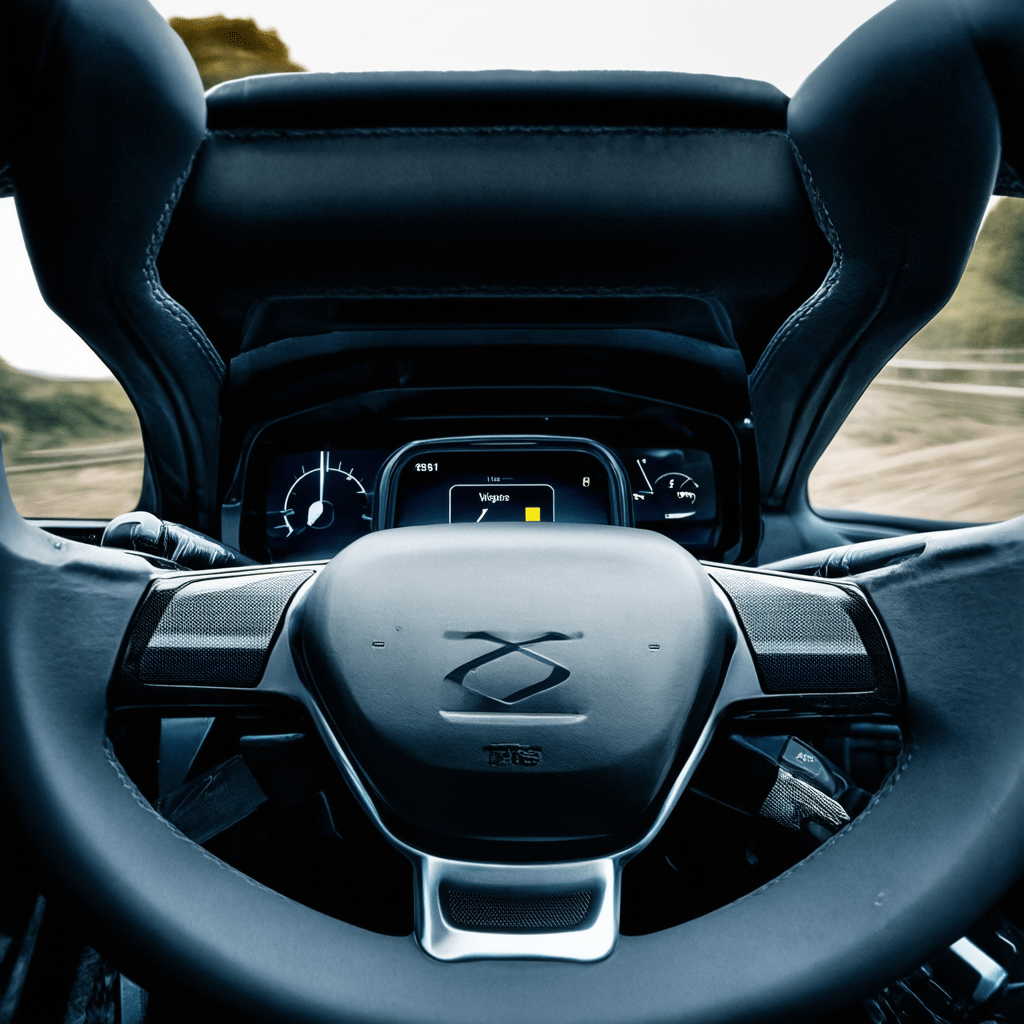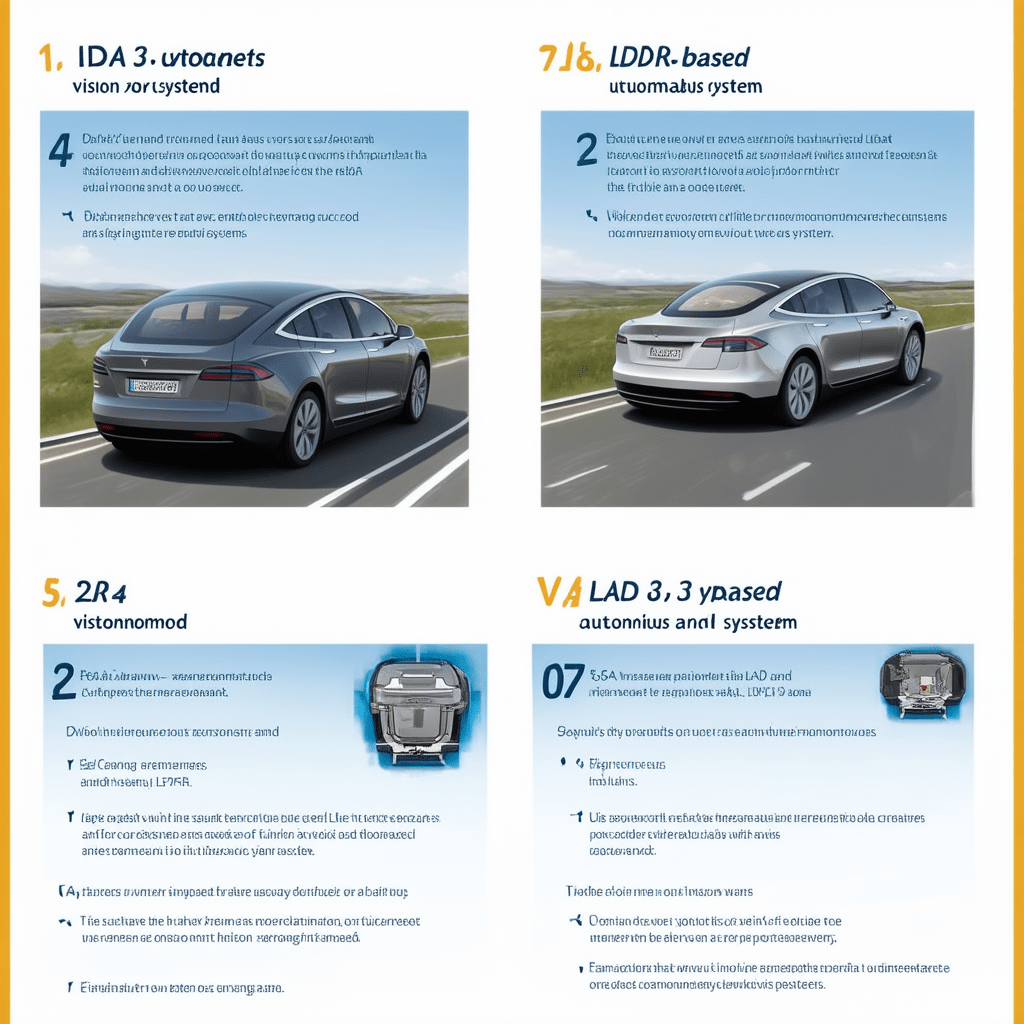Introduction: A Deep Dive into Self-Driving Cars
Table of Contents
Back in the nascent days of self-driving car technology, it all felt like a far-fetched fantasy. I distinctly recall attending one of those pioneering tech conferences where a prototype was showcased. Picture a vehicle that was more akin to a science lab on wheels—clunky, awkward, and moving at a snail’s pace. It seemed less like a futuristic mode of transport and more like something out of a sci-fi novel. Fast forward a decade, and the evolution is nothing short of astonishing. (Read our full guide on Autonomous Vehicles and Self-Driving Technology.)
Today, AI has redefined what we once thought possible. The transformation from those early prototypes to the advanced systems we see now is largely thanks to sophisticated machine learning algorithms and the colossal datasets that fuel them. These datasets, often sourced from millions of miles of driving data, help train the AI to recognize everything from stop signs to pedestrians with uncanny precision. Take, for example, the way AI-powered vehicles handle complex urban environments. On a busy city street, a self-driving car can identify a cyclist weaving through traffic or a pedestrian stepping off the curb, making split-second decisions that emulate human intuition without the emotional noise that can affect human judgment.
This leap in technology isn’t just limited to cityscapes. On serene country roads, these vehicles exhibit the same level of proficiency, adjusting seamlessly to unexpected conditions like deer crossing or sudden rain showers. Companies like Waymo and Tesla have logged millions of miles in testing, demonstrating that self-driving cars are not just a pipe dream but a practical reality. The key takeaway here is the sheer adaptability and learning capability of AI in these vehicles, which ensures they can handle a vast array of driving scenarios with efficiency and safety. It’s this blend of cutting-edge AI and real-world application that has turned the dream of self-driving cars into a tangible reality, revolutionizing the way we think about transportation today.

Key Benefits and Advantages
Self-driving cars are more than just a futuristic idea; they are rapidly becoming a reality that promises to transform the way we move. Consider the staggering statistic that autonomous vehicles could potentially reduce traffic fatalities by up to 90%. That’s not just a number; it represents countless lives saved and families spared from tragedy. This potential reduction in accidents is largely due to AI’s ability to minimize human error, which is the leading cause of road accidents.
In my experience covering the tech industry, I’ve seen how companies like Waymo, Uber, and Tesla are at the forefront of this technological revolution. Waymo, for instance, has clocked millions of miles in real-world testing, showcasing the practical feasibility of their technology. Tesla, on the other hand, integrates AI-driven features like autopilot in its vehicles, offering a glimpse into how self-driving capabilities can be gradually introduced into the mainstream market.
But the impact of autonomous vehicles extends beyond safety. For individuals with disabilities, these cars promise a new level of independence and mobility. Imagine a world where someone who is visually impaired can travel to work or visit friends without relying on others. From a practical standpoint, this kind of mobility enhancement isn’t just a convenience; it’s a game-changer in terms of accessibility.
Moreover, there’s the aspect of transportation efficiency. Autonomous vehicles can optimize routes in real-time, reducing traffic congestion and lowering emissions. This not only saves time but also contributes to environmental sustainability. In urban areas, where congestion is a daily challenge, the deployment of self-driving cars could lead to more fluid traffic patterns and shorter commute times.
The key takeaway here is that the integration of AI in self-driving cars is not just about the technology itself but about the broader societal changes it can bring. As companies continue to innovate and refine these systems, we’re likely to see a significant shift in how transportation is perceived and utilized. It’s an exciting time to witness these advancements, and the potential benefits are as promising as they are profound.
- Self-driving cars aren’t just a futuristic concept; they hold the promise of making our roads significantly safer. Imagine a world where traffic accidents are drastically reduced. With AI at the helm, vehicles can process vast amounts of data in real-time, predicting and preventing collisions before they happen. This reduction in accidents is not just a hopeful vision. Some studies suggest a potential decrease in traffic fatalities by up to 90% if fully autonomous vehicles are widely adopted. That’s an incredible leap forward in road safety, saving countless lives each year.
- Beyond safety, self-driving cars offer enhanced mobility for individuals with disabilities. For many, the ability to travel independently without relying on public transport or assistance from others is life-changing. Autonomous vehicles can provide door-to-door service, making it easier for those with physical limitations to access employment, healthcare, and social activities. This technological advancement is about more than just convenience; it’s about empowering people and improving quality of life.
- The efficiency of transportation systems is another area ripe for transformation. Self-driving cars can communicate with each other and traffic infrastructure to optimize routes, reduce congestion, and lower emissions. By redefining transportation efficiency, these vehicles could lead to shorter commute times and a smoother flow of traffic. This isn’t just a benefit for individual drivers; it has broad implications for urban planning and environmental impact, making our cities cleaner and more livable.
How It Works: A Practical Explanation
At the heart of every self-driving car lies an intricate AI system, meticulously designed to mimic the decision-making prowess of a human driver. It’s more than just executing a list of pre-set instructions; it’s about immersing in a dynamic process of learning and adaptation. Imagine the AI as a vigilant conductor, orchestrating a symphony of data and constantly tuning its performance to the rhythm of the road.
In practical terms, this AI system relies heavily on sophisticated algorithms that process massive amounts of data in real time. These algorithms are the brainpower behind the car’s ability to interpret its surroundings through sensor fusion. Consider a scenario where radar, cameras, and LIDAR work in harmony, providing the vehicle with a 3D map of its environment. This fusion of sensory inputs allows the car to ‘see’ beyond what a human eye can perceive, identifying obstacles, lane markings, and even the subtle gestures of a cyclist at an intersection.
Machine learning plays a pivotal role here, allowing the vehicle to continuously refine its decision-making. It’s akin to how we humans learn from past experiences to make better choices in the future. A self-driving car learns from each journey, updating its models to predict potential hazards like a pedestrian stepping off the curb or another car changing lanes abruptly.
The real-world implication of this technology is profound. For instance, in 2020, Waymo cars drove over 20 million miles on public roads, learning from countless situations to enhance their safety protocols. The key takeaway is that while human input remains minimal, the AI’s ability to adapt and make complex decisions makes autonomous vehicles a promising innovation in transportation safety and efficiency.

Case Study: A Real-World Example
Tesla has carved out a unique spot in the electric and autonomous vehicle sectors, thanks in large part to its Full Self-Driving (FSD) software. This system stands out because it doesn’t follow the conventional path that most autonomous cars take. Instead of relying heavily on LIDAR, which uses laser beams to detect objects and gauge distances, Tesla’s vehicles are driven by a vision-based guidance system.
The brilliance of this approach lies in its mimicry of human vision. Imagine how we drive: we look at the road, observe traffic signals, recognize pedestrians, and adapt to unexpected obstacles. Tesla aims to replicate this human-like perception using a suite of cameras and sensors that feed visual data into deep learning algorithms. This enables their cars to understand and interpret the world much like a human would. In practical terms, it allows Tesla vehicles to navigate not just straightforward highways but also the chaotic streets of a bustling city or winding rural roads.
One of the most impressive features of Tesla’s system is its ability to learn from a massive variety of driving conditions globally. Every Tesla on the road acts as a data collector, constantly gathering information about different environments, weather conditions, and road situations. This data is then fed back into Tesla’s neural network, enabling continuous improvement of the FSD software.
In my experience, this iterative learning process is what sets Tesla apart. Traditional systems might struggle with unexpected scenarios—a deer crossing the road, for example, or sudden roadwork—but Tesla’s AI is constantly evolving. Over time, this has allowed Tesla’s FSD to set a new benchmark in the industry, pushing the boundaries of what’s possible in autonomous vehicle technology. It’s not just about getting from point A to B, but doing so with a level of sophistication and adaptability that mirrors human intuition.
Conclusion: Key Takeaways
AI is at the heart of the self-driving car revolution, transforming what was once confined to science fiction into a tangible part of our daily lives. This transformation is not just about cars that can drive themselves; it’s about a complex web of technologies working together to tackle intricate navigation issues. Think about it: these vehicles need to interpret data from a network of sensors, cameras, and radars in real-time, making split-second decisions similar to a human driver. For example, when a child suddenly darts into the road, the car must quickly evaluate and execute the safest possible maneuver.
In my experience, one of the most impressive aspects of AI in this field is its ability to continuously learn and improve. Machine learning algorithms allow these systems to adapt to new situations by analyzing vast amounts of data collected from millions of miles driven. This isn’t just theoretical. Companies like Waymo have already logged over 20 million miles on public roads, refining their systems to handle countless driving scenarios. But it’s not just about high-profile players like Tesla or Waymo. Traditional automakers like Ford and General Motors are also investing heavily in this technology, recognizing the potential for AI to reduce accidents and enhance mobility.
The key takeaway here is that AI’s role in self-driving cars goes beyond just navigation. It’s about creating a safer, more efficient, and accessible transportation ecosystem. Imagine a world where traffic jams are a thing of the past, where anyone, regardless of physical ability, can enjoy the freedom of travel. The future of AI in driving is not just promising; it’s essential for the next leap in human mobility.

